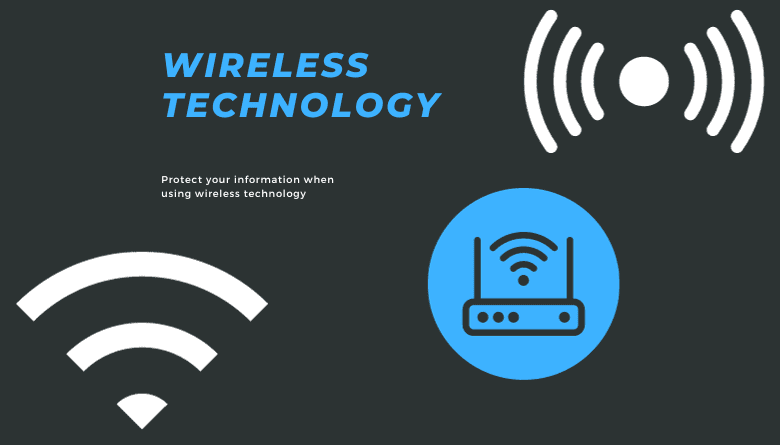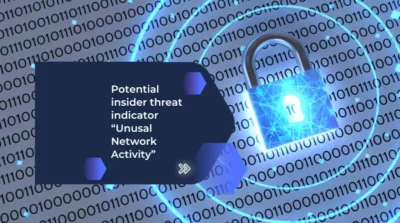How Can You Protect Your Information When Using Wireless Technology?


| Section/Heading | Content |
| SEO Meta-Description | Protecting your information when using wireless technology is essential. Learn how to safeguard your data effectively. |
| Introduction | An overview of the importance of information security when using wireless technology. |
| 1. Understanding Wireless Technology | Explore the basics of wireless technology and its prevalence in today’s world. |
| 2. Potential Risks | Discuss the risks associated with wireless technology, including data breaches and cyberattacks. |
| 3. Secure Passwords and Authentication | Offer insights into creating strong passwords and using multi-factor authentication. |
| 4. Encryption Techniques | Explain encryption methods to secure data transmission and storage. |
| 5. Firewall and Security Software | Discuss the role of firewalls and security software in protecting your information. |
| 6. Public Wi-Fi Precautions | Provide tips for using public Wi-Fi networks safely. |
| 7. Table: Wireless Security Checklist | A checklist summarizing essential steps to protect your data when using wireless technology. |
| 8. VPNs for Added Security | Explore the benefits of Virtual Private Networks (VPNs) in securing your information. |
| 9. Frequently Asked Questions (FAQs) | Address common queries about wireless technology security. |
| 10. Conclusion | Recap key points and emphasize the importance of safeguarding your information. |
In a linked society, wireless technology has integrated into our daily lives. Interacting, having fun, working, and more. But convenience must safeguard our data. This post will show you how to effectively protect your data when utilizing wireless technology.
1. Understanding Wireless Technology
Wireless technology refers to the communication of data without physical connections, using radio waves, electromagnetic fields, or light. It encompasses various forms, including Wi-Fi, Bluetooth, cellular networks, and more. Understanding the basics of wireless technology is crucial to implementing effective security measures.
2. Potential Risks
Using wireless technology opens the door to potential risks such as data breaches, eavesdropping, and cyberattacks. Hackers and malicious actors can exploit vulnerabilities, making it essential to stay informed about these risks.
3. Secure Passwords and Authentication
Creating strong, unique passwords for your devices, networks, and accounts is the first line of defense. Combine upper and lower case letters, numbers, and symbols. Additionally, use multi-factor authentication (MFA) whenever possible to add an extra layer of security.
4. Encryption Techniques
Data encryption is a fundamental method to secure information when it’s transmitted or stored. End-to-end encryption ensures that only authorized parties can access the data, keeping it safe from interception.
5. Firewall and Security Software
Firewalls act as barriers against unauthorized access to your devices and networks. Install reliable security software to detect and prevent threats, ensuring your data’s protection.
6. Public Wi-Fi Precautions
Public Wi-Fi networks are convenient but often insecure. Be cautious when using them and avoid accessing sensitive information when connected to public Wi-Fi. If necessary, consider using a Virtual Private Network (VPN) for added security.


7. Table: Wireless Security Checklist
| Action | Description |
| Create strong passwords | Use a combination of upper and lower case letters, numbers, and symbols. |
| Enable multi-factor authentication | Add an extra layer of security by requiring multiple forms of verification. |
| Encrypt your data | Ensure data is protected during transmission and storage. |
| Install a firewall | Use a firewall to block unauthorized access. |
| Use reliable security software | Choose reputable security software to detect and prevent threats. |
| Be cautious on public Wi-Fi | Avoid accessing sensitive data when connected to public Wi-Fi. |
| Consider using a VPN | Use a VPN for secure data transmission on public networks. |
8. VPNs for Added Security
Virtual Private Networks (VPNs) are excellent tools to secure your internet connection. They encrypt your data and hide your IP address, providing anonymity and protecting your information from prying eyes.
What type of social engineering targets senior officials?
Social engineering tactics that target senior officials in the field of wireless technology often involve exploiting their trust, authority, and access to sensitive information. Senior officials, due to their influential roles and access to valuable data, are particularly appealing targets for malicious actors. Here are some common types of social engineering attacks that may be directed at senior officials in wireless technology:


Phishing
Phishing attacks involve sending deceptive emails or messages that appear to be from a trusted source, such as a colleague or organization. Senior officials may be tricked into clicking on malicious links, downloading malware, or providing sensitive login credentials, compromising the security of their organizations.
Whaling
Whaling attacks are a specialized form of phishing that focuses on high-value targets, such as senior officials. Attackers craft convincing messages that exploit their authority and knowledge of the organization to deceive the victim into taking harmful actions.
Impersonation
In this type of attack, a cybercriminal poses as a trusted colleague or executive within the organization to manipulate the senior official into revealing sensitive information or taking certain actions, such as approving fraudulent transactions.
Pretexting
Pretexting involves creating a fabricated scenario to obtain information or access. Attackers may impersonate vendors, clients, or employees to manipulate senior officials into providing sensitive data, and financial details, or granting unauthorized access.
Baiting
Baiting attacks tempt senior officials into making unwise decisions by offering something too good to pass up. This could involve enticing them with free software downloads, which contain malware, or offering exclusive insider information.
Tailgating
In physical security attacks, a malicious actor gains unauthorized access to secure areas by closely following a legitimate person who has legitimate access. This can be a threat to senior officials working in secure environments.
Vishing
Vishing is the telephone equivalent of phishing, where attackers use voice calls to deceive senior officials into revealing sensitive information. They may pretend to be from their IT department, a bank, or other trusted entities.
These attacks are designed to manipulate the human element within cybersecurity, taking advantage of trust, authority, and sometimes the busy and distracted nature of senior officials to compromise wireless technology systems. To defend against such threats, organizations need robust security awareness training, strict access controls, email filtering, and other cybersecurity measures to protect their senior leadership and sensitive data from social engineering attacks.
Which of the following is a potential insider threat indicator?
One potential insider threat indicator in wireless technology is “Unusual Network Activity.” This can include activities such as:


Excessive Data Downloads: An insider with malicious intent may download large amounts of sensitive data that they shouldn’t have access to.
Unauthorized Access: Attempts to access wireless networks or systems beyond their authorized permissions may indicate an insider threat. For example, an employee trying to access restricted areas of the network or system.
Data Exfiltration: Suspicious transfer of data outside the network, especially to unapproved or external locations, can be an indicator of an insider threat attempting to steal or leak sensitive information.
Repeated Login Failures: Multiple login failures can suggest an insider attempting to gain unauthorized access to wireless systems or networks.
Network Configuration Changes: Unauthorized or unexplained changes in network configurations can be a sign of an insider threat, especially if these changes compromise security.
Abnormal Usage Patterns: Anomalies in usage patterns, such as an employee accessing the network during unusual hours or from atypical locations, can be indicative of an insider threat.
Change in Behavioral Patterns: If an employee’s behavior changes suddenly, especially if it aligns with potential insider threat activities (like being disgruntled or acting unusually secretive), it’s a cause for concern.
Unauthorized Device Connections: Suspicious devices connecting to the wireless network without authorization can be an insider threat indicator, particularly if these devices are not recognized or approved.
It’s necessary to remember that these signs don’t automatically prove an insider threat. To find out if there is indeed a threat coming from within the company, extra research and surveillance may be required. To effectively handle possible hazards, insider threat identification and mitigation require a combination of technology, policies, and training.
Conclusion
Securing your information when using wireless technology is of paramount importance. By understanding the risks, implementing strong passwords, encryption, and firewalls, and using a VPN when necessary, you can significantly reduce the chances of your data falling into the wrong hands. Always stay vigilant and informed, as technology and threats continue to evolve.
FAQs
Is it safe to use public Wi-Fi for online banking?
It’s not recommended. Public Wi-Fi networks are often unsecured, making it easier for cybercriminals to intercept your data.
How can I create memorable yet strong passwords?
You can use a passphrase, a combination of random words, numbers, and symbols. It’s easier to remember and highly secure.
Are all VPNs equally secure?
No, not all VPNs offer the same level of security. It’s essential to choose a reputable, paid VPN service for better protection.
Do I need a firewall if I have security software?
Yes, firewalls and security software complement each other. A firewall blocks unauthorized access, while security software detects and removes threats.
What are the most common types of cyberattacks on wireless networks?
Common attacks include man-in-the-middle attacks, eavesdropping, and data interception.
Is it necessary to update my wireless router’s firmware?
Yes, keeping your router’s firmware updated ensures you have the latest security patches.
What is an insider threat in the context of wireless technology?
An insider threat refers to a security risk posed by individuals within an organization who have access to the organization’s network, systems, or sensitive data, and who misuse this access to cause harm, intentionally or unintentionally.




